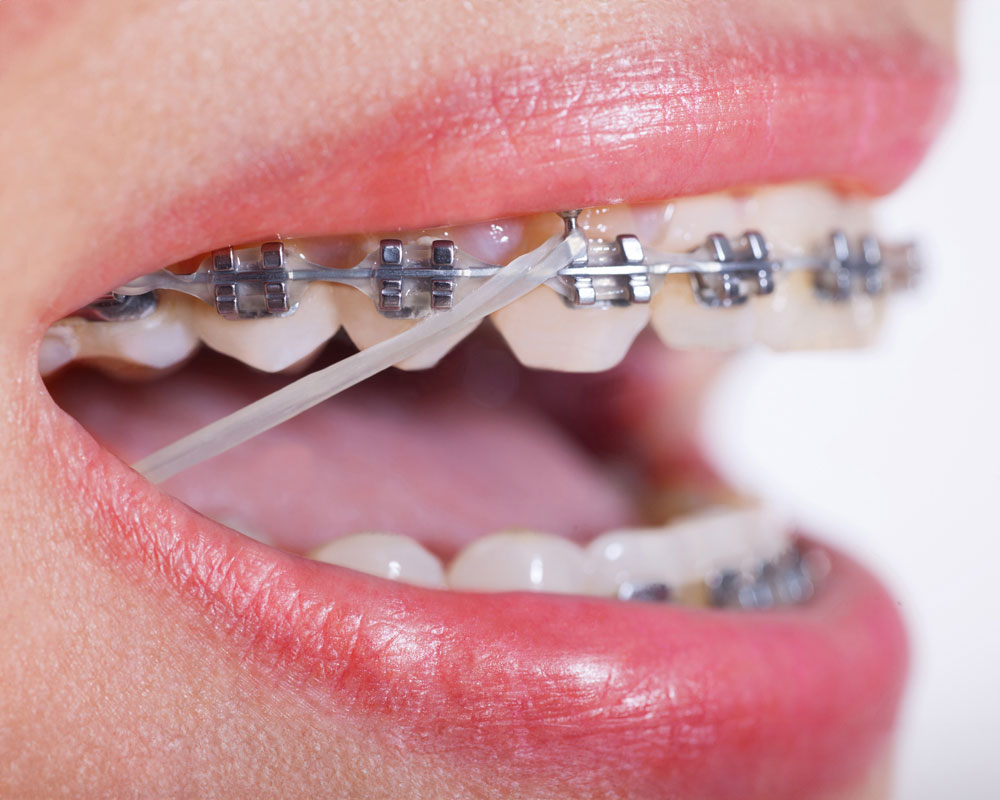
Elastics, or rubber bands, are an essential part of orthodontic treatment. They attach to small hooks on the braces and are taken on and off by the patient to supply the pressure needed to move the teeth into their correct positions. Therefore, to achieve the desired results, you must carefully follow the instructions you receive regarding their placement and use. Anytime you forget to wear your elastics, it will only make your treatment take longer.
Rubber bands or "elastics" are used during orthodontic treatment to help move the teeth and align the bite of the upper and lower teeth. Rubber bands attach to small hooks on the braces and are taken on and off by the patient. Unless otherwise directed, wear your elastics 20-22 hours a day. Remove them when brushing your teeth or during meals (if necessary), and then put them back on immediately. Always carry a few elastics with you so that if one should break, you can replace it right away. If your supply is low, call the office, and we will mail you an additional supply of elastics.

Teeth never fail to move when elastics are worn consistently, as directed by the orthodontist. When elastics are worn one day and left off the next, tooth movement does not continue as rapidly, and often no change takes place. This is caused by the jiggling of the teeth back and forth within the bone, a condition that sets up resistance to normal movement. If you follow the instructions exactly, you will get better, faster, and more comfortable results. This leads to your braces being removed sooner.
There is often some initial discomfort when elastics are first worn, but this discomfort disappears after one to three days. If you stop wearing the elastics during periods of discomfort, slower tooth movement often results, and the discomfort will return when the elastics are replaced. Soreness in the jaw joint area, however, is abnormal. Elastic wear should be discontinued if any problems occur in the jaw joint area. Problems can include pain, clicking or grating sensation, and the inability to open or close the mouth. In case of problems in the jaw joint region, discontinue elastic wear and call our office immediately.
New elastics should be used each day, as the old elastics tend to lose their elasticity with time. It is not necessary to change the elastics more than once a day. You should call the office if you are having trouble getting the elas¬tics hooked properly, if you run out of elastics, or if there is any reason you cannot wear your elastics as directed. At each appointment, check with us to see if you should continue to wear your elastics (and grab a backup supply if needed).